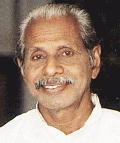"Ode to the West Wind" by P.B. Shelley
- One of the later Romantics - was a Platonist, a Humanist and an Atheist.
- His poetry is typically abstract and allegorical.
- It reflects his concern with the nature of transcendent reality.
- An Ode is a long, serious meditative lyric, which deals with an exalted subject in a lofty or elevated style. It is elaborate in stanzaic structure.
- In this poem, Shelley describes it as a destroyer and a preserver.
- Symbolism of the cycle of the seasons.
- The theme of Birth and Rebirth.
- The poem ends with the poet's wish that the wind be a power of regeneration.
***
- In the first stanza - double functions of the wild west wind - Wind pictured as the Destroyer and Preserver - living river bearing with it the dead leaves - "yellow and black and hectic red" - the wild spirit who buries the dead.
- The second stanza has two images - scatters in confusion the clouds - just as it scatters the leaves of the trees - its sound, like the funeral song of the year.
- The third stanza - the wind is pictured as awakening the Mediterranean from his dream of the ruins of the city that lie buried within his waters. Awakens the loveliness of the isles in Baiae's bay; he disturbs the sleep of the waters.
- In the last stanza - the poet returns to the main emotion and the main image - He is the lyre in which the wind plays - In that way he describes how the poem arose - how all poems of nature are born.






.jpg)
Comments
Post a Comment